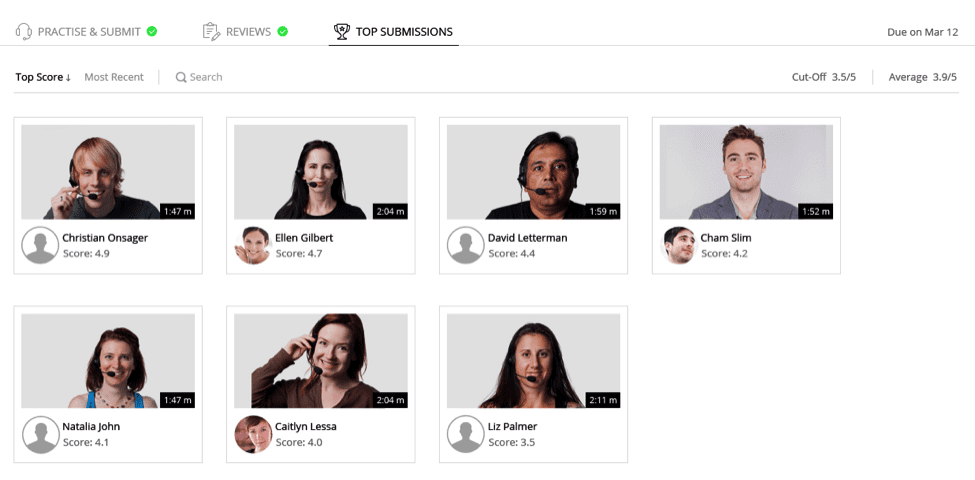There has been a lot of talk about sales coaching recently, and in particular who should be driving it for the most effective results.
There are two schools of thought:
- Sales coaching is driven by managers who choose what reps need to be coached on.
- Sales enablement is responsible for structured coaching, as a part of an overall sales readiness program.
The former is the proven traditional approach, while the latter is part of a new era of sales coaching. But why has this changed? Haven’t managers been effective in coaching their teams to meet their numbers?
I asked some of our customers, and they explained that, in the past, managers were effective in both tactical and strategic coaching. But that was when product training happened once a year, and product updates occurred only every 6 months (remember V2.3.4 updates?).
Nowadays, product training is a part of day-to-day training and product updates are rolled out every week. In order to ensure that all reps have a consistent message, something drastic had to change.
As business demands change rapidly, the sales training and coaching process also needs to become agiler. There are now more people involved in coaching, with sales leadership, sales enablement, and sales managers all collaborating together to determine and execute the most effective coaching process.
These changes have also led to a new framework for coaching. One that moves away from dealing with specific issues, and instead hones the reps’ skills so that they’re always ready; Ready to convey the right message. Ready to speak to their customers. Ready to sell.
It’s not enough to coach a sales rep to have a conversation with a customer. Customers can find information from many sources, and in all instances, the message from reps must be consistent. So it’s important for reps to be message ready. This forms the foundations for each and every rep to understand your value proposition; something that can be driven by sales enablement and peer-to-peer learning. Only with this solid foundation can managers make a real impact on improving customer readiness. If a manager is left to coach a sales rep who doesn’t understand the message, their time will be less effective and they will struggle to scale their coaching efforts. This is where sales enablement and online tools can be most effective.
In a dynamic environment, your customer persona is constantly evolving, so it’s no longer enough to perfect a standard pitch, your reps need to be able to take into account the customer’s specific pain points and needs. They need to be customer ready. Where managers can make the most impact is in preparing their reps for customer readiness. As drivers of growth, they can utilize their knowledge of the customer to improve reps’ tactical sales.
When you bring customer readiness and message readiness together, you get sales readiness.
#1 Message relevance
With new product updates almost every week, and competitors innovating fast, reps are constantly faced with new use cases and objection handling scenarios. To make sure their message is always relevant, your reps need all of this information to be provided to them in real-time so they can have relevant, value-added conversations with their customers.
For example, one way that I’ve seen this done effectively is by enabling the product marketing team to send out regular updates. As the team that knows exactly what the latest feature is, who it’s relevant for and its benefits, they’re best placed to provide these updates.
#2 The power of collaborative practice
What your reps say to customers, and how they deliver their message, has a significant impact on whether they will close the deal. In old-school coaching models reps were limited to learning from their manager and the immediate team only. But thanks to technology, it’s becoming easier to facilitate collaborative practice using role plays.
For example, the sales mission capability in Mindtickle enables your reps with a safe arena to practice common customer scenarios and receive feedback from managers. They can also learn from their peers. Imagine the impact on your reps’ performance if they learned how to deliver an elevator pitch, how to handle objections, or received competitive pitch coaching, from your top performers across the country and around the globe?
By learning from peers in other teams, and even other sales managers, reps can gain a much broader perspective, and become better sales professionals as well. When done well, I’ve seen as much as 80% of the message learning can be achieved through collaborative practice.

#3 Manager mentorship
Mentoring is one of the best ways for reps to improve sales performance. While every manager has their own style when it comes to coaching and mentoring, when coupled with the processes described above, they will have more capacity to focus on strategic coaching. This will allow them to really hone in on skill development for their reps, helping them to become better sales professionals.
#4 Tactical coaching from manager and peers
There are lots of deal-by-deal tips and tricks that managers and other reps have up their sleeve. When managers have reps who have a solid foundation, they can focus their efforts on tactical coaching. Managers are also privy to the success stories of other reps (and managers). By sharing these across the team, reps can also gain the benefit of this knowledge that plays a pivotal role in ensuring higher win rates.
Bottomline: The coaching process needs to be more agile
Knowing and doing are two very different things, that’s why practice is so important. In order to make the coaching process more agile it needs to include more practice, in the form of role plays, and also leverage technology to enable that practice to be continual. When combined with mentorship and tactical coaching, as part of a well-defined process, you build a sales coaching cadence that will make your company and reps successful.








